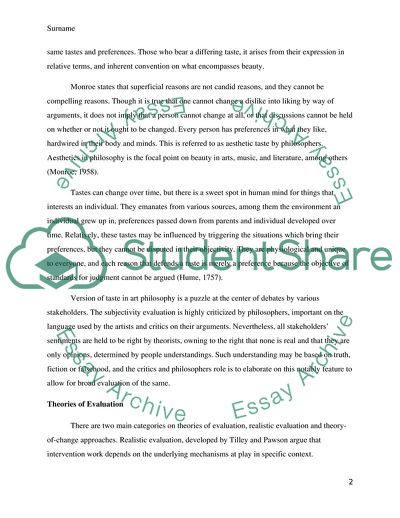Cite this document
(Objectivism vs Relativism in Aesthetic Evaluation Term Paper Example | Topics and Well Written Essays - 4250 words, n.d.)
Objectivism vs Relativism in Aesthetic Evaluation Term Paper Example | Topics and Well Written Essays - 4250 words. https://studentshare.org/philosophy/1852735-philosophy-of-art-objectivism-vs-relativism-in-aesthetic-evaluation
Objectivism vs Relativism in Aesthetic Evaluation Term Paper Example | Topics and Well Written Essays - 4250 words. https://studentshare.org/philosophy/1852735-philosophy-of-art-objectivism-vs-relativism-in-aesthetic-evaluation
(Objectivism Vs Relativism in Aesthetic Evaluation Term Paper Example | Topics and Well Written Essays - 4250 Words)
Objectivism Vs Relativism in Aesthetic Evaluation Term Paper Example | Topics and Well Written Essays - 4250 Words. https://studentshare.org/philosophy/1852735-philosophy-of-art-objectivism-vs-relativism-in-aesthetic-evaluation.
Objectivism Vs Relativism in Aesthetic Evaluation Term Paper Example | Topics and Well Written Essays - 4250 Words. https://studentshare.org/philosophy/1852735-philosophy-of-art-objectivism-vs-relativism-in-aesthetic-evaluation.
“Objectivism Vs Relativism in Aesthetic Evaluation Term Paper Example | Topics and Well Written Essays - 4250 Words”. https://studentshare.org/philosophy/1852735-philosophy-of-art-objectivism-vs-relativism-in-aesthetic-evaluation.


